The Apple Watch Review
by Joshua Ho & Brandon Chester on July 20, 2015 8:00 AM EST- Posted in
- Wearables
- Apple
- Mobile
- Apple Watch
Final Words
At the beginning of this review, I said that I haven’t worn watches in any consistent fashion for my entire life. In a lot of ways, this will be an accurate characterization for many people. With the rise of the cellphone and its network-synchronized time, it became pretty much pointless for most people to wear a watch. The ergonomic annoyances involved with wearing a wristwatch strongly outweighed whatever functionality it provided. In this context, Apple is really facing an uphill battle with the Apple Watch. Apple has to sell people on the concept of a watch all over again, and not just on the idea of a smarter watch, which is a challenge that they never faced in smartphone adoption.
There are so many aspects of the Apple Watch that really have to be considered before we figure out whether Apple has succeeded, so we have to break this down into multiple aspects. The first is the design, because people that wear wristwatches all the time don’t really approach this the same way others would. What seems normal to people that wear watches all day long is easily uncomfortable and annoying to people that aren’t used to wearing watches.
As a result, this kind of discomfort can easily result in a wearable that ends up thrown in a drawer somewhere to be forgotten, which won’t bode well for long-term gains. I’ve tried other wearables, but nothing really interested me because everything was uncomfortable in some way. Over time, these small annoyances just made it easy for me to decide that the functionality of the wearable was outweighed by the discomfort of the design.
The Apple Watch on the other hand doesn’t suffer from discomfort issues at all, and in this regard, Apple has arguably pushed the industry forward. For the most part, it’s a pretty safe bet that pretty much anyone will find a band design that they like. In the case of a band like the Milanese Loop band, the problems I’ve always had with traditional leather buckle bands are pretty much eliminated. The Sport band is rather traditional, but the material used helps to alleviate discomfort when sweat starts to wet the band and evenly distributes tension around the wrist.
Meanwhile, although Apple’s wristbands use a proprietary mechanism to lock into the watch, like the Lightning connector it makes a huge difference in user experience because it’s incredibly easy to swap out bands compared to just about every other watch or wearable I’ve seen. The design is also executed well, which is good enough that it doesn’t look out of place when comparing it to analog watches. We can talk about whether the watch is too thick but on the wrist it blends it well without significant problems. The one problem that I’ve noticed in terms of ergonomics is that long sleeves are a significant impediment to usability because I have to pull my sleeve back to use the watch.
One crucial aspect of the Apple Watch's design and accessibility is its size. Apple sells two versions for people with different wrist sizes, and this alone is something that distinguishes it from most other smart watches on the market today. Even with two sizes, the larger 42mm Apple Watch is still substantially smaller than most other wearables. This makes the Apple Watch accessible to a wide range of people, and it highlights an issue that is prevalent within this section of the wearable market which is that smart watches tend to be sized quite generously to accommodate large batteries and PCBs. While this is fine for users with larger wrists, it ends up excluding a large portion of the market. A user who feels most comfortable with the 38mm Apple Watch, for example, will almost certainly find a watch like the Moto 360 to be far too large.
Outside of design, the other critical aspect to getting a modern watch right is SoC, which sounds absolutely absurd for a timepiece. However, it's important to emphasize that Apple cannot afford to only sell Apple Watch to people who already believe that it is sufficient for a watch to only tell time; Apple Watch needs the performance to do more.
In this regard, Apple has targeted the SoC correctly for a 28nm HKMG process. A 520 MHz Cortex A7 is ultimately the right choice to make to focus as strongly as possible on perf/W for this platform, given that average power draw over the course of 18 hours can only be about 40-50 mW at most it’s important to make sure that the CPU voltage and frequency curves are in the right place for the TDP of a watch and that the CPU spends most of its time in an efficient mode of operation. The use of an appropriately-sized GPU for the watch form factor is also important, and helps with making power stay at the 40-50 mW average power consumption over the course of a day.
The one catch here is that at 28nm the performance that the watch can deliver is on the edge of what’s acceptable in terms of frame rate and loading times. Apple Watch really needs a better process technology in order to deliver more performance without compromising power consumption, and a move to a leading-edge FinFET process would go a long way towards accomplishing this thanks to the rather significant voltage improvements FinFETs afford.
Ultimately, hardware is just one part of the equation. Hardware innovation is impressive in its own right, but without an application there’s no value to the end user. Fortunately, WatchOS delivers in a very big way. Force Touch is consistently used throughout the UI to provide additional controls that otherwise would reduce information density. The Digital Crown is used to allow for information density that allows for precise zoom and scrolling in a way that I never really experienced with other wearables, and is really an integral part of the WatchOS UI as capacitive touch is almost never used outside of tapping in everyday use.
Key features like fitness, music playback, text messaging, and email are all executed well with very little need for end user intervention which is really critical on a device where any sort of text input is difficult to say the least. Notifications are also well-handled and work as expected, with no strange behavior like not dismissing notifications on the phone if dismissed from the watch, and appropriate haptic feedback for various notifications. Apple Pay also works well from the software side even if there are some ergonomic pitfalls.
Out of all the wearable OSes I’ve seen, it really feels like WatchOS is what iOS was for smartphone OSes. Of course, Apple Watch isn’t perfect in the software department. Due to the relatively weak SoC in this version of the Apple Watch there’s a lot of time spent staring at loading screens when the app is loading from the phone or if the app needs to pull information from the network. There are also a surprising number of cases where the UI visibly runs below 60 FPS or otherwise stutters, which suggests that an extra CPU core and/or higher clocks would help a lot. There are also some problems with how multiple notifications from either the same or different apps are handled, but overall the execution on the software side is excellent.
Getting back to hardware, aspects like the display and battery life are also solid when examined in a vacuum. The display could probably be improved upon from an energy efficiency perspective, but given limited testing tools it’s difficult to have the same data that we do on the smartphone side, so this assumption is almost purely based on power testing of LG OLED and Samsung OLED displays in various smartphones. The brightness of this display is acceptable, and the calibration is excellent by any standard which surprised me given the reduced need for color accuracy in a wearable display. Subjectively, I didn’t have a lot of trouble with seeing the display in daytime but given the use of the more conventional glass on the Sport edition reflection should be greatly reduced relative to variants with the sapphire lens.
Although we don't have an objective battery life test, the Apple Watch never failed to last a full day, and charge time is acceptable although nowhere as fast as something with wired fast charging. This sounds like a relatively short comment, and it's because I sincerely never worried about battery life. Range anxiety just isn't a problem like it is on smartphones.
The Taptic Engine is also a seemingly simple change, but the result of a modified linear actuator incorporating the speaker has a pretty enormous effect because notifications become impossible to miss. Apple claimed that the haptic feedback would feel like someone is tapping you on the wrist, and that’s actually entirely accurate. I normally don’t pay that much attention to haptic feedback in something like a smartphone, but in this case it’s such a big deal because it’s far quieter than conventional vibration yet immediately obvious no matter the situation. I’ve missed notifications before on my phone despite strong vibration feedback, but I’ve never missed a notification on the watch because of this new haptic feedback system.
In light of all of this, we have to try and split up this review into multiple parts. Although this is a review of the Apple Watch, the Apple Watch will ultimately be quickly forgotten with the launch of future iterations of the Apple Watch. After all, Apple is not trying to sell the world on the idea of a smarter watch, but the idea of a watch altogether.
For those still deciding on whether the first Apple Watch makes sense, I have no reservations in saying that it’s the best wearable I’ve ever used. However, at the same time I find it hard to recommend this first-generation Apple Watch. It’s clear that there are far too many obvious areas to improve upon, areas where Moore’s law will help to dramatically improve the experience. In the case of smartphones, Moore’s law made it possible to deliver true all-day battery life and fluid app performance. After spending a few months with the Apple Watch, all I can see is a need for more compute and battery life, like what happened with smartphones.
Finally, we get back to the question of whether Apple will be sell people on the concept of a watch. In the months since I first used the watch I’ve ended up wearing it every day. I distinctly noticed its absence when I forgot the charger on a trip. I don’t know if Apple will succeed in convincing others of the utility of a watch, but they’ve definitely convinced me.


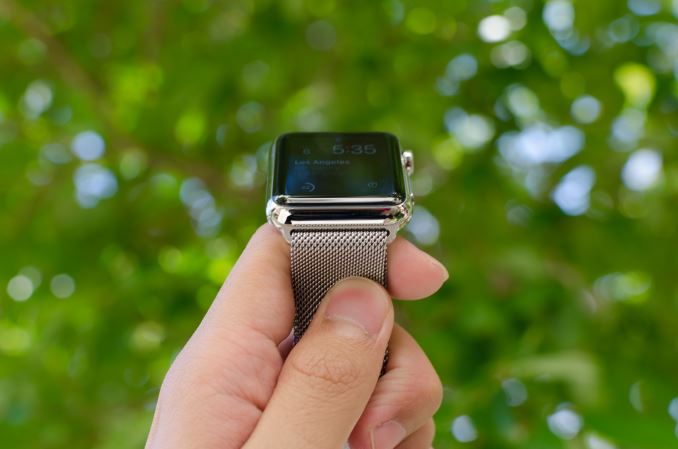
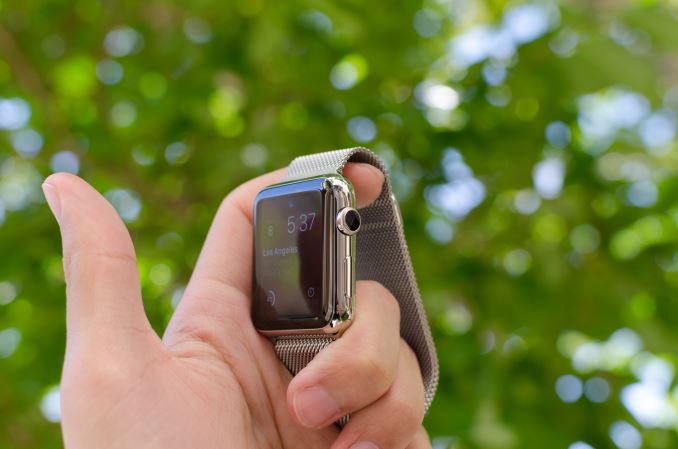
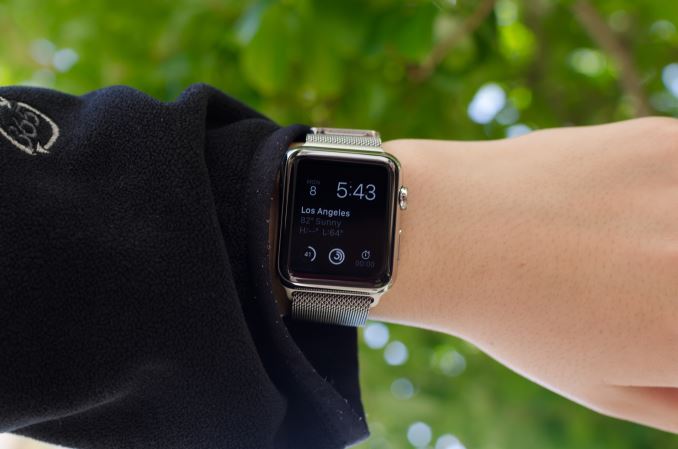
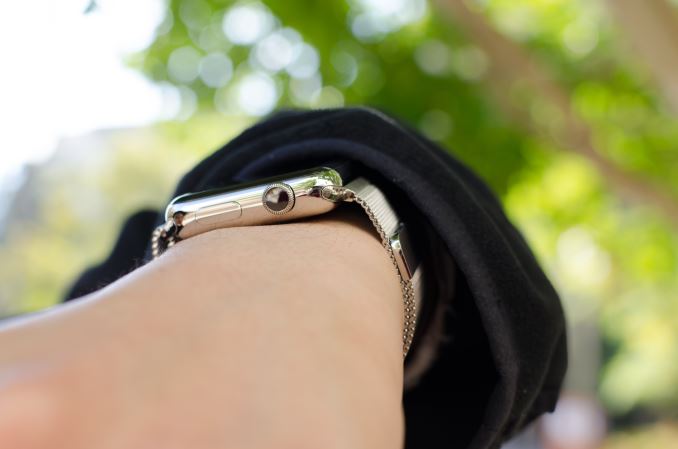
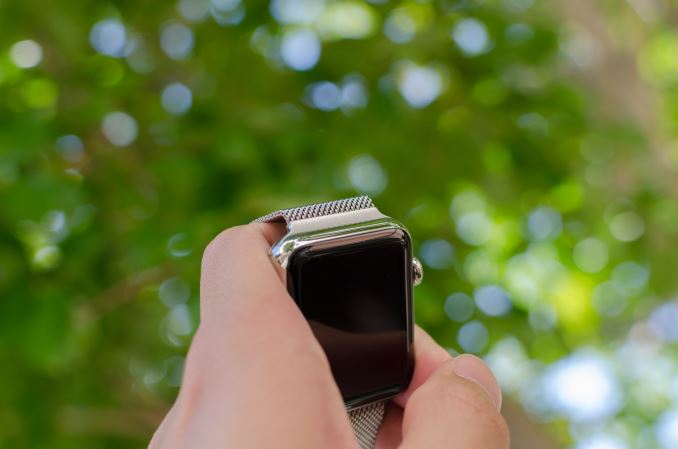
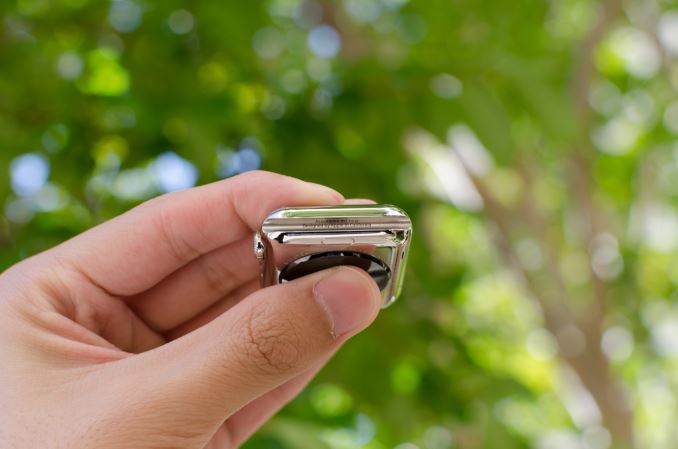








270 Comments
View All Comments
TedKord - Monday, July 27, 2015 - link
Holy crap. That post was longer than the review.Figaro56 - Saturday, August 1, 2015 - link
Holly crap you sound exactly like a manic depressive friend of mine. You lost me at the gazillionth POS comment.michellepennie - Wednesday, August 26, 2015 - link
Boohoo you sound the jealous type and i bet you couldn't afford one :P loldsumanik - Monday, July 20, 2015 - link
You know what Ryan, I'll give you the benefit of the doubt.Whether it was apple PR or not is irrelevant. I'll even admit I didn't even finish the entire article because it read like a kid getting a new toy for christmas explaining how magical it was.
Can you explain to my why the author(s) felt the need to photograph and post not one, not two, not three, not four but FIVE neatly arranged unboxing shots... on the very first page of the article.
The shots were deliberately arranged on a cleaned, attractive, ironed cloth that tied into the watch's color scheme.
Some questions about the opening sequence of photos :
- Do you think that these shots reveal any info to your readers? Tech specs, warranty info, durability?
- Why does the EXIF info read adoble lightroom. Like gimme a break. They were enhanced.
- If we remove all verbiage, does the watch look attractive, or unattractive in any way shape or form?
- Do people generally wear a timepiece nicely draped over their fingers in front of a sunny picturesque tree?
- Is it just a coincidence that not only I but others, thought the photo's looked 'funny'?
The author(s) deliberately took time and significant effort to make the product to look as attractive as possible. The opening page, it's photographs and presentation instantly clue the reader that this piece is obviously written with heavy marketing bias and the overall tone and conclusion will be a positive one.
Is my original post inflammatory? Sure. Beligerent? yes.
100% True?
YES.
You know why this watch isn't selling? Apple's customers are thinking this:
"Cool! New apple watch! What does it do?"
"Hmm, it doesnt really do that much. I was kind of expecting more."
"You know what, it's kinda chunky and why does it stutter?...OMG, 400 bucks? pffff totally not worth it."
I know this because I am an apple customer, and this thing pretty much just sucks.
Some more questions:
- Do you think it would be good for your publication to write a scathing review of an apple product that went viral? Isn't that kind of sad?
- Would you recommend this product for a single mother, your grandma, or anyone else close to you?
- Have you thought about purchasing this product for ANYONE as a gift?
- Had this review not taken place would you have gone out and purchased this item for yourself? LOL!!!!
- Can you link me an article written on anandtech that portrayed any apple product in a negative light, ever?
I'm sorry RyanI know you are jsut doing your job but the 'general consumer' is getting smarter and the internet is getting clogged up with this kind editorial crap.
The only way to stop it is to speak up, LOUD, and be heard.
Didn't Ellen Pao just say it best?
"The trolls are winning"
By trolls, she meant the general public tha ist sick of being lied to and manipulated.
Lied to by presidents, company reps, journalists, law enforcement, intelligence agencies....right down to silly little amazon reviews.
2 weeks later he files a patent to provide an advertisement based on your bank account balance!
Call a turd a turd.
Dont photoshop it then, sprinkle whipcream and cherries on top.
Just sayin.
Ryan Smith - Monday, July 20, 2015 - link
"You know what Ryan, I'll give you the benefit of the doubt."Thank you. I appreciate it.
"Whether it was apple PR or not is irrelevant. I'll even admit I didn't even finish the entire article because it read like a kid getting a new toy for christmas explaining how magical it was.
Can you explain to my why the author(s) felt the need to photograph and post not one, not two, not three, not four but FIVE neatly arranged unboxing shots... on the very first page of the article."
The short answer is that our Apple reviews have a wider reach than our standard technical articles. The range of readers that will show up to AnandTech for a MacBook or iPhone review has a much more distinctive consumer shift than say an SSD or CPU review. And while we still have a large number of technical readers (who are our heart and soul), it's also good for us to be visible to less technical consumers, as it helps them learn that we exist and, hopefully, come back to learn things that no other site can offer.
In any case, when you're working to reach a broader audience, you need to focus on more than just words. Less technical consumers aren't going to care about the S1 analysis for example, and that's okay, because we reach these users in other ways. And one of the ways we do that is in photography. Broader audiences like pictures - they like good pictures - and that means we step up our game on photography for these reviews in order to accommodate those users. There are a number of other sites out there reviewing the Watch, and there is a segment of the broader audience that will write us off in favor of another review if we show up with poor photography, so we need to make sure that not only is our analysis top notch, but our prose and imagery is competitive as well.
At the end of the day we won't make any compromises on the technical side for our regular technical readers, but if we can also bring wider consumers into the fold through materials such as improved photography, we will do that as well. This way both techies and non-techies alike can enjoy our articles and learn something from them.
mapesdhs - Tuesday, July 21, 2015 - link
Irony is, if the photos were 'poor', someone would be complaining about that instead. Ya can't please all of the people all of the time...Ian.
Schickenipple - Tuesday, July 21, 2015 - link
It's sad, Ryan, that you actually had to explain this to someone. I thought your core readers would understand that an Apple Watch review isn't in the same category as a NVMe PCIe SSD. Guess not.bo3bber - Saturday, July 25, 2015 - link
Ryan, just wanted to observe that this approach has had the opposite effect on me. I used to come to AnandTech as my absolute goto first tech site, and these Apple puff pieces made me question your other reviews. So instead of improving your reach, at least for me, you reduced your reach because I feel that I cannot trust you as much as I did.The fact that Anand himself also left to go to Apple would strongly suggest you be wary of running Apple stuff that is fluffy.
I only read the summary, because the out-of-box first page showed me it was going to be a puff piece not a technical review.
I think you do yourself a disservice and have damaged your brand by trying to reach a larger market.
Samus - Tuesday, July 21, 2015 - link
They clearly haven't paid attention to the high production value of ALL Anandtech articles over the past decade. You guys use top notch photography and lightboxes all the time. These comments are ridiculous.The Reddit fallout must have sent trolls to every corner of the internet.
victorson - Wednesday, July 22, 2015 - link
Ryan, I do respect Anandtech coverage a lot and Josh has done some great research articles that I'm still digesting. However, I have to agree with others: this review just reads strangely lacking in perspective. It is choke-full of weird claims about watchOS being the iOS in the watch world, and about all that first-gen BS that gets throw around. Why is it that every tech reviewer would gladly slam a device for its poor functionality, but once we start talking about Apple, suddenly you guys chicken out and rather than saying that it's shit, you say that 'well, it lags like hell, but that's okay, because it's a first gen product.' And how about commenting on the lack of any actual useful functionality on the watch that would make users spend a ludicrous $700 for a single-core 500MHz processor running a 1.5" display? Don't get me started on forgetting to mention that other competitors have always-on screen (the WatchOS is a sore disappointment) AND come with two days of battery life. AND half the price! But no, rather than giving us some insightful comments on that, we get the 'I'm definitely convinced in the smartwatch now'. Thanks, very useful! /s